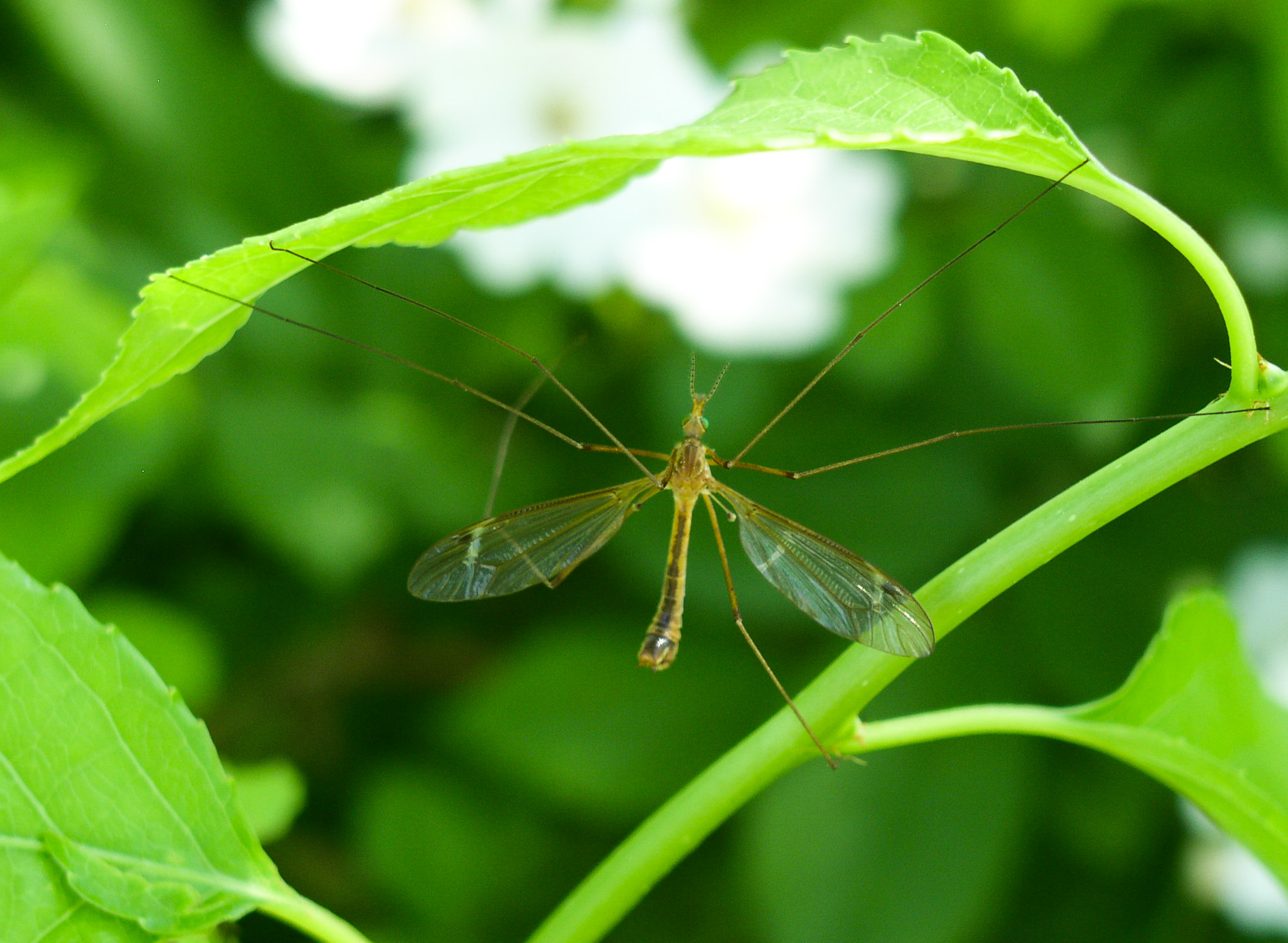|
Tipula
''Tipula'' is a very large insect genus in the fly family Tipulidae (crane flies). The members of this genus are sometimes collectively called common crane flies. ''Tipula'' contains over 2,000 species located throughout the world. Like all crane flies, ''Tipula'' species have long bodies and long legs, somewhat resembling large mosquitos Mosquitoes (or mosquitos) are members of a group of almost 3,600 species of small flies within the family Culicidae (from the Latin ''culex'' meaning "gnat"). The word "mosquito" (formed by ''mosca'' and diminutive ''-ito'') is Spanish for "litt .... Adults generally have a body length of 15-20 mm. They are usually brown with clear or brownish wings. They feed on nectar and are active throughout the year. ''Tipula'' maggots are sometimes known as "leather jackets" due to their tough skin. Technical description: Discal cell present ; M3 arises from M4 ; all tibiae spurred Antennae with whorls of long hairs. Rs usually long ; Sc ends far fro ... [...More Info...] [...Related Items...] OR: [Wikipedia] [Google] [Baidu] |
Tipula Oleracea
The marsh crane fly (''Tipula oleracea'') is a species of cranefly found throughout the Palaearctic and parts of the Nearctic The Nearctic realm is one of the eight biogeographic realms constituting the Earth's land surface. The Nearctic realm covers most of North America, including Greenland, Central Florida, and the highlands of Mexico. The parts of North America .... Its specific name ''oleracea'' means "related to vegetables/herbs" in Latin and is a form of (). Technical description A usually greyish species, but abdomen occasionally ferruginous and often with a blackish median and/or lateral longitudinal stripe. The wing length is 18–28 mm. The minimum space between eyes below is at most subequal to the maximum width of antenna! scape ; the antennae are 13-segmented. The male tergite 9 has a short median projection (its breadth at base exceeding its length), and roundly bifurcated at apex, the bifurcations blackish ; sternite 8 simple, 9 almost fused w ... [...More Info...] [...Related Items...] OR: [Wikipedia] [Google] [Baidu] |
Tipulidae
Crane fly is a common name referring to any member of the insect family Tipulidae. Cylindrotominae, Limoniinae, and Pediciinae have been ranked as subfamilies of Tipulidae by most authors, though occasionally elevated to family rank. In the most recent classifications, only Pediciidae is now ranked as a separate family, due to considerations of paraphyly. In colloquial speech, crane flies are sometimes known as "mosquito hawks", "skeeter-eater", or "daddy longlegs", (a term also used to describe opiliones (harvestmen) and members of the spider family Pholcidae, both of which are arachnids). The larvae of crane flies are known commonly as leatherjackets. Crown group crane flies have existed since at least the Barremian stage of the Early Cretaceous and are found worldwide, though individual species usually have limited ranges. They are most diverse in the tropics but are also common in northern latitudes and high elevations. Tipulidae is one of the largest groups of flies, ... [...More Info...] [...Related Items...] OR: [Wikipedia] [Google] [Baidu] |
Tipula Luna
''Tipula luna'' is a species of Tipulidae, true cranefly. Distribution Widespread throughout the West Palaearctic. References * External linksBioLib {{Taxonbar, from=Q615961 Tipulidae Diptera of Europe Insects described in 1879 ... [...More Info...] [...Related Items...] OR: [Wikipedia] [Google] [Baidu] |
10th Edition Of Systema Naturae
The 10th edition of ''Systema Naturae'' is a book written by Swedish naturalist Carl Linnaeus and published in two volumes in 1758 and 1759, which marks the starting point of zoological nomenclature. In it, Linnaeus introduced binomial nomenclature for animals, something he had already done for plants in his 1753 publication of '' Species Plantarum''. Starting point Before 1758, most biological catalogues had used polynomial names for the taxa included, including earlier editions of ''Systema Naturae''. The first work to consistently apply binomial nomenclature across the animal kingdom was the 10th edition of ''Systema Naturae''. The International Commission on Zoological Nomenclature therefore chose 1 January 1758 as the "starting point" for zoological nomenclature, and asserted that the 10th edition of ''Systema Naturae'' was to be treated as if published on that date. Names published before that date are unavailable, even if they would otherwise satisfy the rules. The only ... [...More Info...] [...Related Items...] OR: [Wikipedia] [Google] [Baidu] |

_head.jpg)
.jpg)
